Your smartwatch’s Bluetooth version dramatically affects its range from your phone. Bluetooth 5.0 extends connectivity up to 240 meters outdoors and 40 meters indoors—four times farther than Bluetooth 4.0’s 10-meter indoor reach. You’ll also get doubled data transfer rates and improved power efficiency with newer versions. However, walls, furniture, and interference often reduce real-world range to just 10 meters. Modern versions like Bluetooth 5.3 prioritize connection stability over extended range for reliable performance in challenging environments.
Bluetooth 5.0 Delivers 4x Greater Range Than Previous Versions
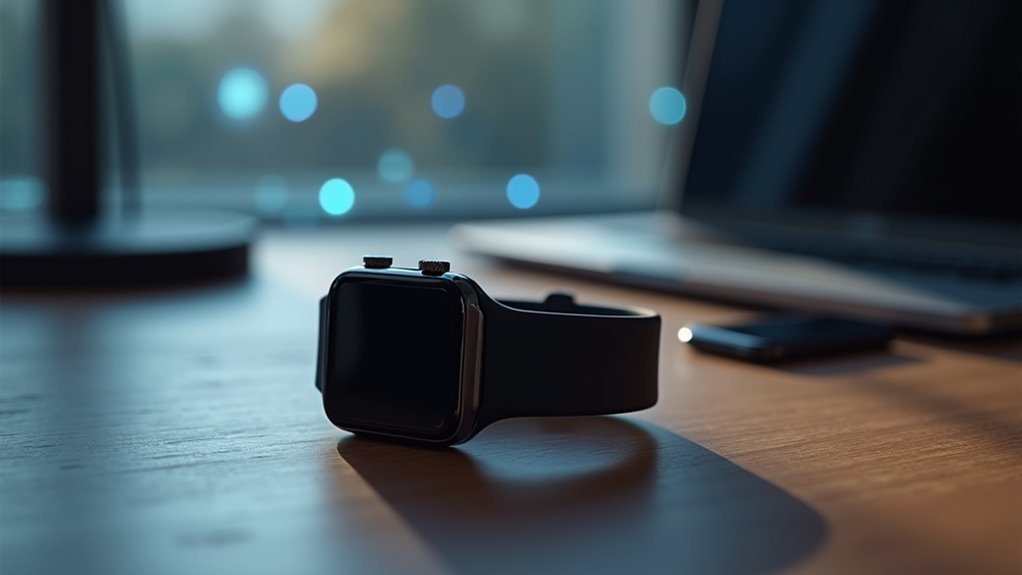
Bluetooth 5.0 revolutionizes wireless connectivity by extending your device’s range up to 240 meters in ideal conditions—that’s four times farther than Bluetooth 4.0’s typical 50-meter reach.
You’ll notice dramatic improvements in both indoor and outdoor environments. While Bluetooth 4.0 covers only 10 meters indoors, Bluetooth 5.0 stretches to 40 meters. Outdoors with clear line-of-sight, you can achieve up to 200 meters of connectivity.
This enhanced range transforms how you use fitness trackers and smartwatches. You won’t lose connection when moving around larger spaces or stepping away from your phone.
The technology also reduces multipath interference, making your connection more reliable over longer distances. Despite this increased range, Bluetooth 5.0 maintains low power consumption, preserving your device’s battery life. Additionally, Bluetooth 5.0 features doubled transfer rates compared to previous iterations, ensuring faster data transmission alongside the extended range capabilities.
Data Transfer Rates Double While Maintaining Extended Connection Distance
Beyond extending your connection range, Bluetooth 5.0 brings significant speed improvements that enhance your smartwatch experience.
You’ll enjoy doubled data transfer rates from 1 Mbps to 2 Mbps for Bluetooth Low Energy, enabling faster syncing and smoother performance. The technology optimizes transmission efficiency while maintaining those extended distances you need for reliable connectivity.
Here’s what this means for your device usage:
- Faster syncing – Health data, notifications, and app updates transfer twice as quickly
- Improved responsiveness – Real-time features like fitness tracking respond more efficiently
- Better audio quality – Enhanced streaming capabilities for music and calls
- Reduced lag – Commands and interactions execute with minimal delay
- Extended battery life – Efficient data transmission conserves power during usage
You’ll experience seamless performance without sacrificing the 240-meter range capabilities that make Bluetooth 5.0 revolutionary. Additionally, Bluetooth 5.0 increased advertising packet size to 255 bytes, allowing your smartwatch to broadcast more detailed information during device discovery and connection processes.
Power Efficiency Improvements Enable Longer Range Without Battery Drain
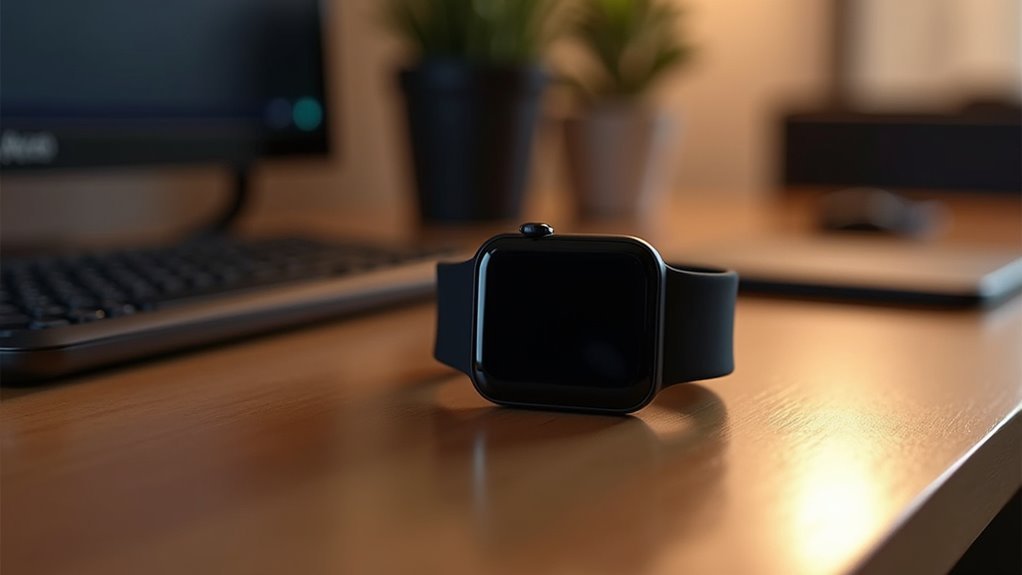
While faster data transfer rates grab attention, the real breakthrough in Bluetooth 5.0 lies in its revolutionary power efficiency improvements that let your smartwatch maintain extended range without draining your battery. You’ll notice your device runs considerably longer while staying connected at greater distances.
| Feature | Old Versions | New Versions (5.0+) |
|---|---|---|
| Sleep Mode Access | Slow changes | Quick connection subrating |
| Data Transmission | Higher power per packet | Optimized protocols use less energy |
| Battery Performance | Frequent charging needed | Extended daily usage |
These improvements stem from enhanced Low Energy mode optimizations and GATT caching improvements that eliminate redundant data transmissions. You’re getting more functionality with less power consumption, making your smartwatch truly practical for all-day wear without compromising connectivity range. The technology enables IoT devices to operate for years on a single coin cell battery, fundamentally changing how we think about device longevity.
Environmental Obstacles Significantly Reduce Real-World Watch Connectivity
Although Bluetooth 5.0 delivers impressive theoretical range improvements, real-world conditions markedly reduce your smartwatch’s actual connectivity distance.
While manufacturers advertise ranges up to 100 meters in controlled lab settings, you’ll typically experience only 10 meters indoors due to environmental factors.
Physical barriers notably impact your watch’s performance:
- Concrete walls and metal structures block RF signals, reducing range by over 50%
- Dense furniture and indoor partitions amplify signal loss beyond manufacturer specifications
- People moving between your watch and phone create temporary but noticeable disconnections
- Electromagnetic interference from Wi-Fi, microwaves, and other devices degrades signal quality
- Crowded environments introduce multipath propagation, causing signal distortion and packet loss
Your watch’s placement matters too—storing devices in pockets or metal enclosures further weakens connectivity. The 2.4 GHz band used by Bluetooth creates natural trade-offs between achieving longer range and maintaining higher data throughput rates.
Newer Bluetooth Versions Prioritize Stability Over Additional Range Extension
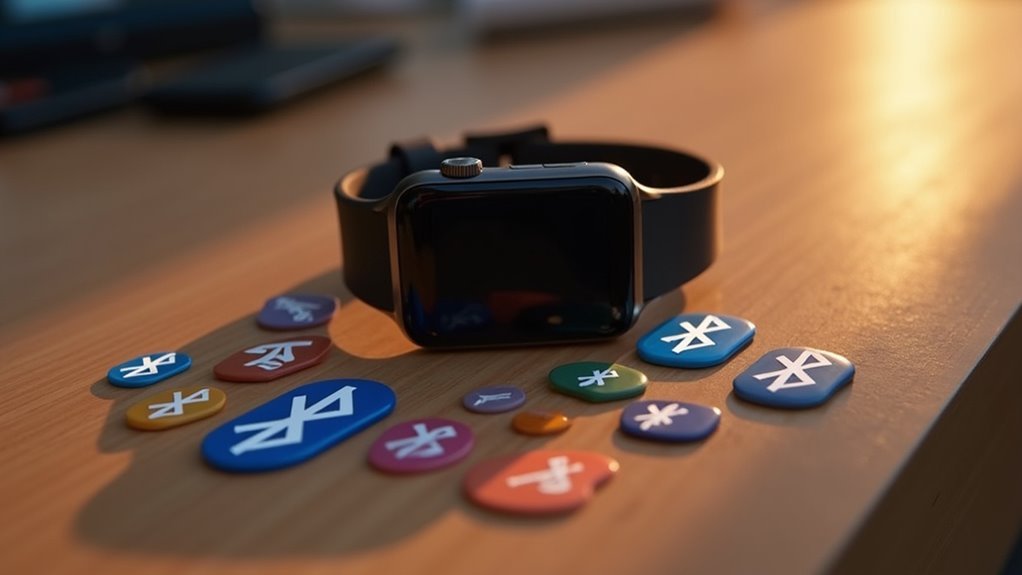
These environmental challenges led Bluetooth engineers to reconsider their development priorities with version 5.0 and beyond.
While Bluetooth 5.x promised 4x range increases over 4.2, you’ll find real-world gains less dramatic than advertised. Instead, engineers shifted focus toward connection stability and power efficiency with each minor release.
You’ll notice Bluetooth 5.3’s LE Connection Subrating dynamically adjusts data rates for better stability, while improved interference handling guarantees your watch stays connected reliably.
Enhanced adaptive scheduling reduces packet collisions, making dropped connections rare under normal conditions.
Your watch benefits more from smoother reconnection and reduced signal interruption than extended range. These refinements create near-constant connectivity in typical usage scenarios, with fewer pairing issues and less manual reconnection needed.
Modern smartwatches utilizing mesh networking capabilities can maintain stable connections even in challenging wireless environments.
Frequently Asked Questions
Can I Upgrade My Older Smartwatch to a Newer Bluetooth Version?
You can’t upgrade your older smartwatch’s Bluetooth version through software updates. The Bluetooth chip is fixed hardware installed during manufacturing, so you’re stuck with the original version that came with your device.
Which Smartwatch Brands Offer the Best Bluetooth 5.0 Range Performance?
You’ll find Samsung Galaxy Watch 7, Google Pixel Watch 3, and Garmin Venu 3S deliver excellent Bluetooth 5.0 range performance, typically reaching 50+ meters indoors with stable connections for health tracking and notifications.
Does Using Multiple Bluetooth Devices Simultaneously Reduce My Watch’s Connection Range?
Using multiple Bluetooth devices simultaneously doesn’t directly reduce your watch’s range. However, you’ll experience interference from device density and spectrum congestion, which can degrade signal quality and effective connection reliability.
Will Thick Clothing or Winter Gear Interfere With My Smartwatch’s Bluetooth Signal?
Yes, thick clothing and winter gear will interfere with your smartwatch’s Bluetooth signal. Dense fabrics, insulation layers, and metal components in winter wear create physical barriers that weaken or block the signal between your watch and paired devices.
Can I Extend My Smartwatch’s Bluetooth Range Using Signal Boosters or Repeaters?
You can use Bluetooth repeaters to extend your smartwatch’s range, but they’ll typically require your phone to connect via cable, limiting mobility. Wireless mesh networks work better for true range extension.
In Summary
You’ll find that upgrading to Bluetooth 5.0 dramatically improves your smartwatch’s range and performance. You’re getting four times the connectivity distance compared to older versions, plus faster data speeds without sacrificing battery life. However, you shouldn’t expect perfect performance in all environments since walls and obstacles still interfere with signals. You’ll notice that newer Bluetooth versions focus more on maintaining stable connections rather than pushing range limits even further.

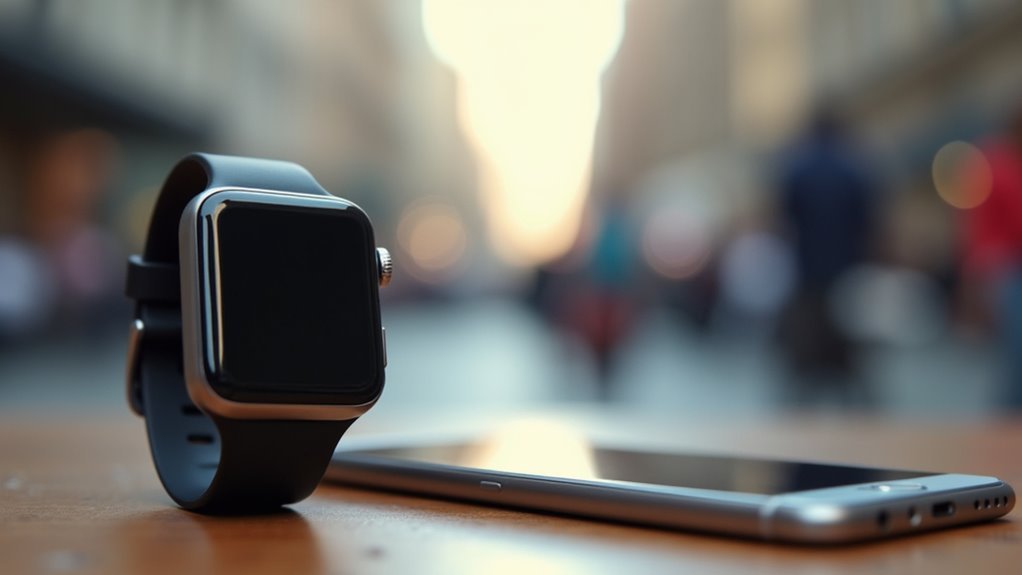

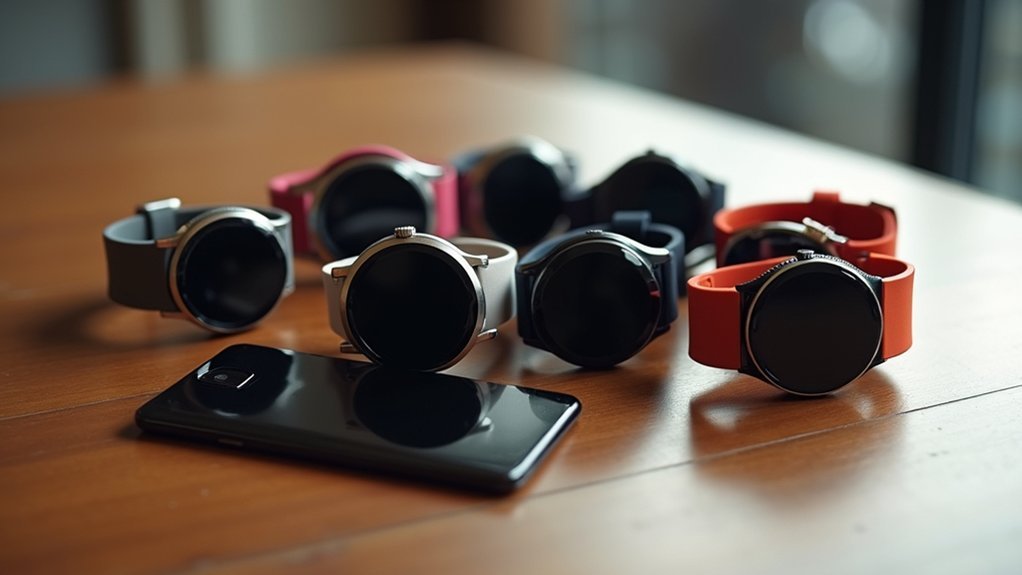
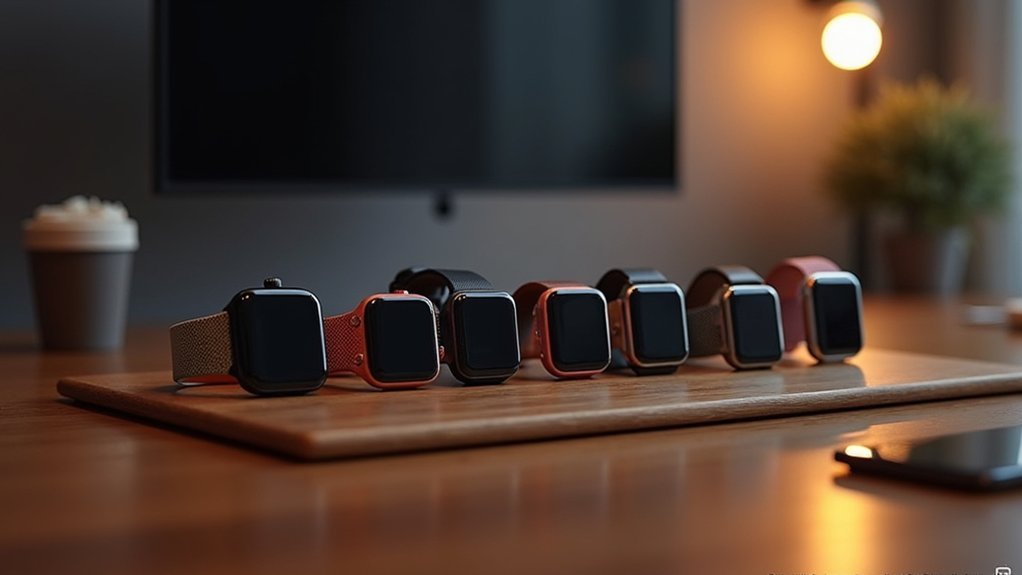
Leave a Reply